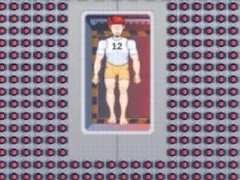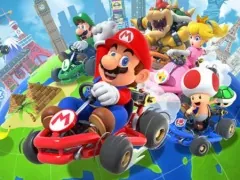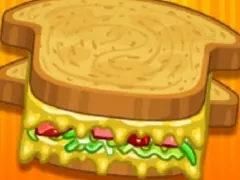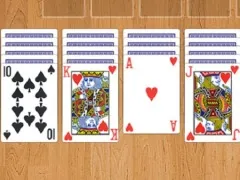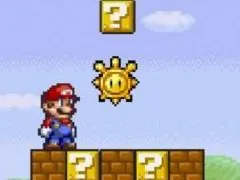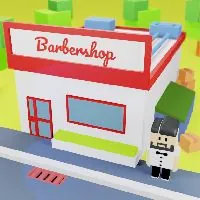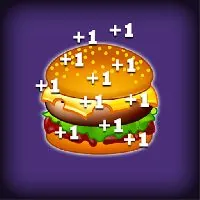PAPA’S PIZZERIA
SIMILAR GAMES
Description
Papa’s Pizzeria - UNBLOCKED GAMES WTF
About Papa’s Pizzeria - UNBLOCKED GAMES WTF
Welcome to the vibrant and demanding culinary world of Papa’s Pizzeria, a game where the art of pizza making meets the thrill of high-stakes time management. In this engaging experience, players step into the shoes of the newest employee at Papa Louie’s esteemed pizza establishment. When Papa Louie himself must depart on an unexpected adventure, the responsibility of keeping his renowned pizzeria thriving falls squarely on your shoulders. The challenge is immediate and continuous: a steady stream of customers arrives, each with their own specific cravings and expectations for the perfect pizza. Your mission is to fulfill these orders with speed, accuracy, and a touch of culinary flair. The success of the pizzeria, and indeed your standing as its operator, depends entirely on your ability to master the intricate process of crafting delicious pizzas, satisfying every patron who walks through your doors.
The Genesis of Papa’s Pizzeria Gameplay
The core of Papa’s Pizzeria lies in its elegantly simple yet deeply engaging gameplay loop. Players are introduced to the fundamental stages of pizza preparation, beginning with the crucial step of preparing the pizza base. This involves taking raw dough and skillfully stretching it to the desired size and thickness. Following this, the selection and application of sauces become paramount, with various options available to lay the foundation for the toppings. The subsequent stage involves the meticulous placement of an extensive array of toppings, ranging from an assortment of cheeses and meats to a diverse palette of vegetables. Finally, the pizza must be baked to a state of golden-brown perfection, a process that requires careful monitoring of time and temperature to achieve optimal results. Each of these stages demands precision and attention to detail, as even the slightest misstep can lead to a dissatisfied customer and a less-than-stellar score.
Mastering the Art of Customization
What elevates Papa’s Pizzeria beyond a mere cooking simulator is its emphasis on customer customization. Unlike standardized recipes, every pizza created in this establishment is a unique, bespoke order. Customers arrive with distinct preferences, meticulously detailing their desired sauce quantity, the type and amount of cheese, and the specific toppings they wish to adorn their pizza with. Furthermore, the arrangement of these toppings can be just as crucial to some patrons, adding another layer of complexity to the order fulfillment process. Successfully replicating these custom requests requires a keen memory and the ability to quickly translate verbal instructions into tangible culinary creations. This dedication to personalized service is the hallmark of Papa Louie’s reputation, and it is this very standard that players must uphold to achieve success.
The Progression and Earning System
As players navigate the initial days and weeks of managing Papa’s Pizzeria, they will quickly discover a robust progression system designed to reward efficiency and accuracy. With each successfully completed order, players earn tips and revenue, which are vital for upgrading the pizzeria. These upgrades can encompass a wide range of improvements, from enhancing kitchen equipment to speed up cooking times, to expanding the variety of available ingredients, allowing for even more diverse and complex pizza creations. The game also introduces a ranking system, where consistent performance and customer satisfaction contribute to an overall score. Higher ranks unlock new customer types, more sophisticated order requests, and a deeper dive into the challenges of running a popular eatery. This constant drive for improvement and expansion keeps players invested and motivated to continually refine their pizza-making skills.
Navigating the Daily Rush and Special Orders
The daily operations at Papa’s Pizzeria are characterized by a dynamic and often frenetic pace. As the in-game clock advances, the volume of incoming orders can escalate dramatically, particularly during peak hours. Players must learn to juggle multiple tasks simultaneously, transitioning seamlessly between the dough station, the sauce and topping preparation areas, and the oven. Effective multitasking is not just beneficial; it is absolutely essential for survival. Beyond the standard orders, the game occasionally introduces special events and challenges, such as large party orders or VIP customers with particularly exacting demands. These special occasions provide unique opportunities for bonus points and heightened stakes, testing the player's ability to perform under pressure and deliver exceptional results when it matters most.
The Strategic Element of Resource Management
While the visual appeal of crafting delicious pizzas is undeniable, Papa’s Pizzeria also incorporates a significant strategic element centered around resource management. This includes not only managing the ingredients available but also managing the player’s time effectively. Efficiently preparing each component of the pizza, from stretching the dough just right to ensuring toppings are added in the correct order and quantity, directly impacts the speed at which orders can be fulfilled. Waste is also a factor; overcooking a pizza or using too many ingredients can impact profitability. Players must develop a keen sense of economy and efficiency to maximize their earnings and keep the business flourishing. Investing tips wisely in upgrades that address bottlenecks in the production process is a key strategy for long-term success.
Customer Satisfaction and Loyalty
The ultimate measure of success in Papa’s Pizzeria is the satisfaction of its customers. Each customer who receives their pizza is given a rating based on various factors, including accuracy of the order, timeliness of preparation, and overall quality of the final product. High ratings translate into larger tips and increased customer loyalty. Loyal customers tend to return more frequently and are often more forgiving of minor imperfections, contributing to a more stable and profitable business. Conversely, consistently low ratings can lead to declining business and a negative impact on the pizzeria’s reputation. Building and maintaining a base of happy, returning customers is therefore a cornerstone of the gameplay, encouraging players to strive for perfection with every pizza they serve.
The Enduring Appeal of Papa’s Pizzeria
The enduring popularity of Papa’s Pizzeria can be attributed to its masterful blend of accessible gameplay mechanics and challenging objectives. It offers a rewarding experience for players of all skill levels, from casual gamers looking for a fun diversion to those who thrive on strategy and optimization. The colorful graphics, cheerful music, and the inherent satisfaction of creating a perfect pizza contribute to a highly enjoyable and immersive experience. The game’s ability to simulate the pressures of running a small business in an engaging and lighthearted manner has made it a beloved title for many. It teaches valuable lessons about time management, multitasking, and the importance of customer service, all within the entertaining framework of a digital kitchen. This combination of factors ensures that Papa’s Pizzeria remains a compelling and replayable game that continues to attract new fans and delight long-time players seeking to hone their culinary management skills.
Exploring the Various Stages of Pizza Creation
The journey from a simple ball of dough to a finished, delectable pizza in Papa’s Pizzeria is broken down into distinct and critical stages, each demanding a player’s undivided attention. We begin with the Order Station, where the initial customer request is taken. Here, meticulous attention must be paid to every detail—the specified size of the pizza, the exact type and amount of sauce, and the comprehensive list of toppings, including their precise placement if indicated by the customer. This is the blueprint for the entire creation process, and any misunderstanding or omission at this stage will inevitably lead to order inaccuracies later on.
Following the order confirmation, we move to the Dough Station. This is where the foundational element of the pizza is prepared. Players must select a portion of raw dough and skillfully stretch it using an intuitive interface. The goal is to achieve the requested diameter and thickness, ensuring a perfectly formed base that will hold up to the subsequent layers of ingredients. A well-stretched dough is not merely cosmetic; it directly impacts the baking process and the final texture of the crust. Mastering the stretching technique, achieving consistent results, and adapting to different dough consistencies are key skills developed at this station.
Next, we transition to the Sauce Station. Here, players are presented with a selection of sauces, each with its unique flavor profile. The crucial task is to apply the correct sauce in the specified quantity. Some customers prefer a light drizzle, while others desire a generous coating. Accuracy in sauce application prevents the pizza from becoming too dry or too soggy, influencing the overall taste and structural integrity. Understanding the nuances of sauce application, such as spreading it evenly to the edges without overflowing, is part of the refined skill set required for excellence.
The Topping Station represents the most visually dynamic and often most complex part of the pizza-making process. This area is stocked with an extensive variety of ingredients, including an impressive assortment of cheeses, meats, vegetables, and other specialty items. Players must carefully select each topping and place it precisely as per the customer’s order. This involves not only choosing the correct ingredients but also applying them in the right amounts and, crucially, in the specified positions on the pizza. Some customers are particular about the arrangement of their pepperoni, while others might request a specific topping only on one half of the pie. This level of detail transforms pizza making from a simple assembly line into a personalized art form. Mistakes here are highly visible and directly impact customer satisfaction.
Finally, the pizza embarks on its journey to the Oven Station. This is where the magic of transformation occurs through heat. Players must place the assembled pizza into the oven and monitor its baking progress. The duration and temperature settings are critical. Overbaking can lead to a burnt crust and dried-out toppings, while underbaking will result in a doughy, unappealing pizza. Players need to develop a keen sense of timing, often juggling multiple pizzas in the oven simultaneously, ensuring each one reaches its optimal state of doneness without burning. Successfully managing the oven is a testament to a player's multitasking capabilities and their understanding of the cooking process.
Customer Interactions and Feedback Dynamics
The interaction with each customer in Papa’s Pizzeria is more than just an exchange of orders and payments; it is a crucial feedback mechanism that drives player improvement. Each customer’s experience is evaluated based on several key metrics, contributing to their overall satisfaction score. The accuracy of the order is paramount. Did we use the correct sauce? Are all the requested toppings present? Are they placed correctly? Any deviation from the customer’s precise specifications will result in a deduction from their satisfaction rating. This underscores the importance of unwavering attention to detail at every stage of the preparation process.
Timeliness is another critical factor. The game operates on a simulated clock, and customers have a patience meter. Fulfilling orders quickly, without sacrificing accuracy, leads to higher satisfaction. Delays can frustrate customers, leading to reduced tips and potentially a negative dining experience. Mastering efficient workflows and minimizing idle time between tasks are essential for keeping the customer queue happy and moving. The ability to anticipate customer needs and prepare ingredients in advance without compromising freshness is a skill honed through practice.
The quality of the final product is also assessed. This includes the aesthetic appeal of the pizza, such as an evenly baked crust, well-distributed toppings, and a generally appetizing appearance. A pizza that is burnt, undercooked, or sloppily assembled will invariably receive a lower quality score. This encourages players to take pride in their work and strive for visual as well as culinary perfection. Ultimately, the combination of accuracy, speed, and quality determines the customer's final rating. High ratings translate into generous tips, which are then reinvested into the pizzeria for upgrades, allowing for further enhancements to efficiency and ingredient variety, creating a positive feedback loop that rewards player skill and dedication.
Unlocking New Ingredients and Kitchen Upgrades
As players advance through the levels and accumulate earnings in Papa’s Pizzeria, they unlock a continuously expanding repertoire of ingredients and invaluable kitchen upgrades. Initially, the selection of sauces and toppings might seem limited, but as the pizzeria gains popularity and earns more, new and exciting options become available. This includes a wider array of specialty cheeses, premium meats, exotic vegetables, and even unique condiments that allow for the creation of increasingly complex and gourmet pizzas. The introduction of new ingredients not only broadens the creative possibilities but also presents new challenges in terms of order fulfillment, as players must quickly learn to incorporate these novel items into their preparation routines.
Beyond ingredient expansion, the game offers a variety of crucial kitchen upgrades designed to streamline operations and boost efficiency. These upgrades can range from enhanced ovens that bake pizzas faster and more evenly, to improved dough mixers that speed up preparation, and even automated sauce dispensers that ensure precise application. Investing in the right upgrades at the opportune moment is a key strategic decision that can significantly impact a player's success. For instance, upgrading the oven might be crucial if underbaking is a recurring issue, whereas investing in a faster dough preparation station could be beneficial if long wait times at the dough station are causing customer dissatisfaction. These upgrades are not merely cosmetic; they are essential tools for overcoming the escalating challenges as the game progresses.
The Role of Tips and Pizzeria Expansion
The economic engine of Papa’s Pizzeria is driven by the skillful management of tips earned from satisfied customers. Each successful order generates revenue, but it is the tips that provide the discretionary funds necessary for meaningful growth and improvement. Higher customer satisfaction scores directly correlate with larger tips, creating a direct incentive for players to perform at their best. These hard-earned tips are not merely for show; they are the lifeblood of the pizzeria’s expansion. Players can use their accumulated wealth to purchase a variety of enhancements that improve both the efficiency and the appeal of their establishment. This can include cosmetic upgrades to the restaurant’s decor, which can sometimes positively influence customer mood and patience, or functional upgrades to kitchen equipment, as previously discussed.
The ultimate goal of this reinvestment is to expand the pizzeria’s capacity and capabilities. With more advanced equipment, players can handle a greater volume of orders simultaneously, reducing wait times and increasing throughput. Access to a wider array of ingredients allows for the fulfillment of more diverse and complex orders, attracting a broader customer base and further boosting earning potential. This cycle of earning, reinvesting, and expanding forms the core progression loop of the game, ensuring that players are constantly striving to improve their operations, unlock new possibilities, and ultimately build the most successful pizza empire possible within the game’s universe.
Mastering the Pace and Flow of Papa’s Pizzeria
The gameplay in Papa’s Pizzeria is a meticulously crafted exercise in pace and flow management. Players must develop an innate sense of rhythm, understanding when to switch between different stations and how to anticipate the needs of incoming orders. The initial stages of the game might feel relatively relaxed, allowing new players to familiarize themselves with the mechanics of dough stretching, sauce application, and topping placement. However, as the in-game days progress, the volume of customers increases, and so does the pressure. The once manageable queue can quickly transform into a bustling crowd, demanding an accelerated pace of work.
Effective multitasking is the cornerstone of mastering this flow. Players will find themselves simultaneously preparing dough for one order while the previous pizza is baking, and simultaneously taking a new order from an arriving customer. Success hinges on the ability to seamlessly transition between these tasks, minimizing any downtime. For instance, while waiting for dough to proof or a pizza to bake, a player can use that time to chop vegetables for future use or to review upcoming orders. This proactive approach to task management allows for a more efficient and less chaotic gameplay experience. Learning to group similar tasks together, such as preparing multiple dough bases in succession or applying sauce to several pizzas before adding toppings, can also significantly optimize workflow and reduce the overall time spent per order.
The Reward of Culinary Perfection in Papa’s Pizzeria
The ultimate satisfaction derived from playing Papa’s Pizzeria comes from the pursuit and achievement of culinary perfection. Each perfectly crafted pizza, made with precision, speed, and adherence to every customer’s unique specification, offers a sense of accomplishment. It is a direct reward for the player’s dedication, skill, and ability to manage the intricate demands of the virtual kitchen. The visual feedback of a beautifully assembled pizza, golden brown from the oven and adorned with precisely placed toppings, is inherently gratifying. This visual confirmation of a job well done is complemented by the tangible rewards of higher scores, increased tips, and the overall success of the pizzeria.
Moreover, the game provides a sense of progression and growth. Witnessing the pizzeria evolve from a humble establishment to a thriving, popular eatery is a testament to the player’s journey. Unlocking new ingredients, mastering complex order combinations, and consistently achieving high customer satisfaction ratings all contribute to this feeling of accomplishment. The challenges presented by increasingly demanding customers and more complex orders serve to continually test and refine the player’s skills, ensuring that the pursuit of perfection remains an engaging and rewarding endeavor throughout the entire gameplay experience. It is this blend of immediate gratification from a well-made pizza and the long-term satisfaction of building a successful virtual business that makes Papa’s Pizzeria such an enduringly popular title.
Papa’s Pizzeria invites you into the bustling world of pizza making where precision and time management are the keys to culinary success. You take on the role of the sole employee at Papa Louie’s pizza shop after he unexpectedly leaves town. As orders come in, you are tasked with stretching dough, adding a variety of sauces and toppings, and baking them to perfection. Each customer has their unique preferences, from the amount of sauce and cheese to the specific toppings and their arrangement, making every pizza a custom order.
Craft Perfect Pizzas to Satisfy Your Customers
Managing the pizzeria requires keen attention to detail and efficient use of time. You must balance the demands of the order station, topping station, baking station, and cutting station. Customers evaluate your performance based on how well you replicate their desired pizza and how quickly they receive their order. Satisfactory service results in generous tips and points, which you can use to upgrade your shop’s equipment, enhancing your efficiency. Success in the game is measured by your ability to manage a flurry of orders and maintain high customer satisfaction amidst the growing complexity of requests.









